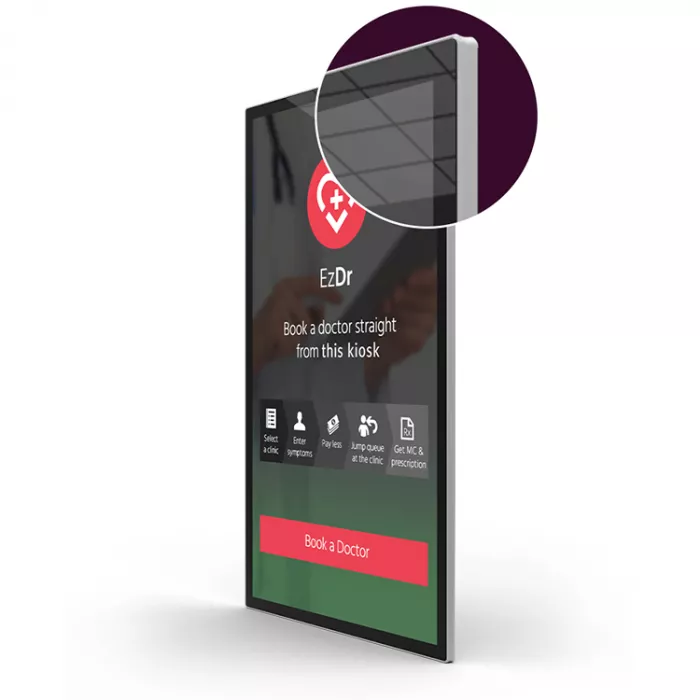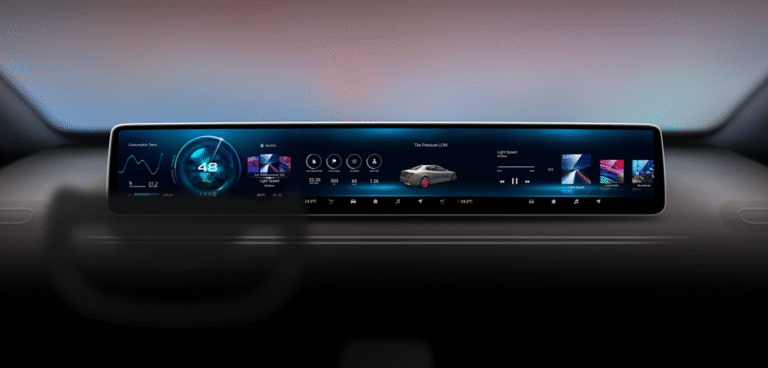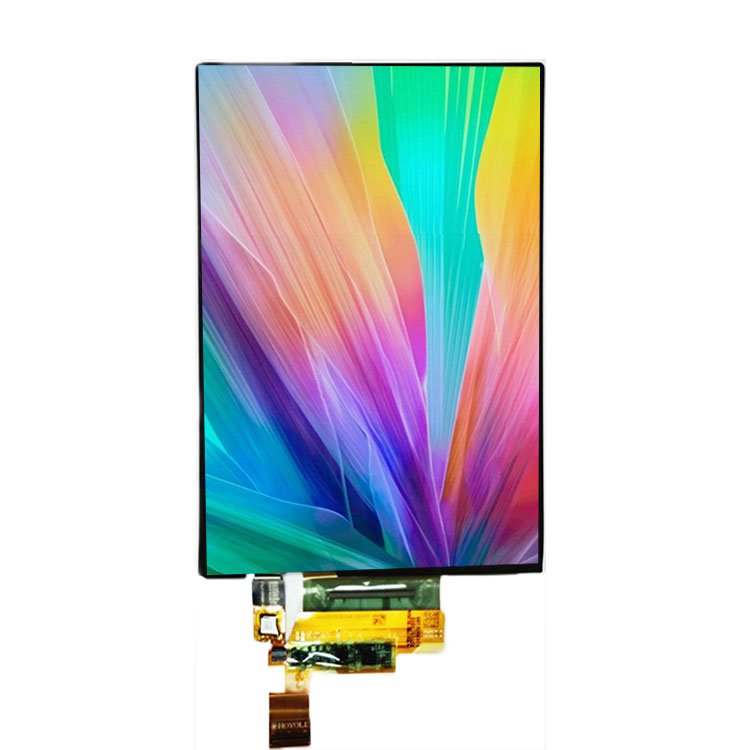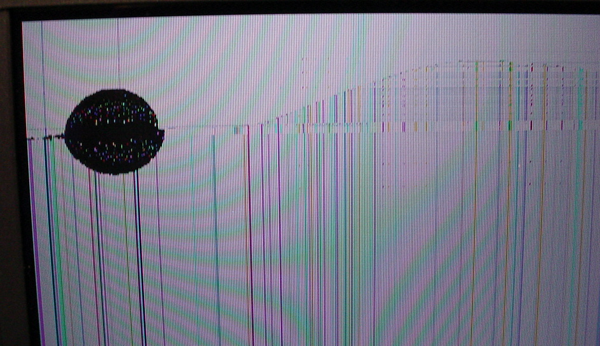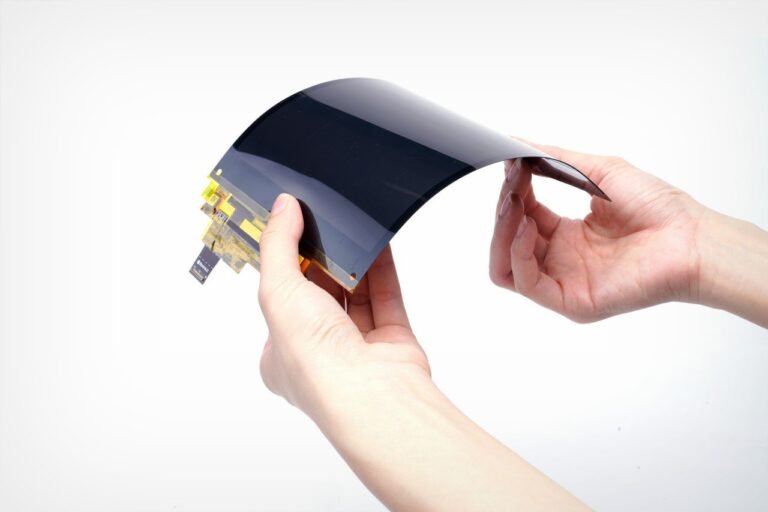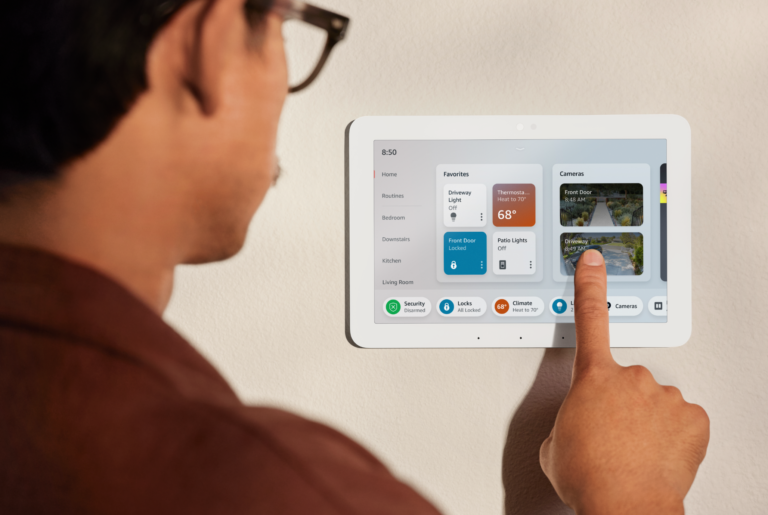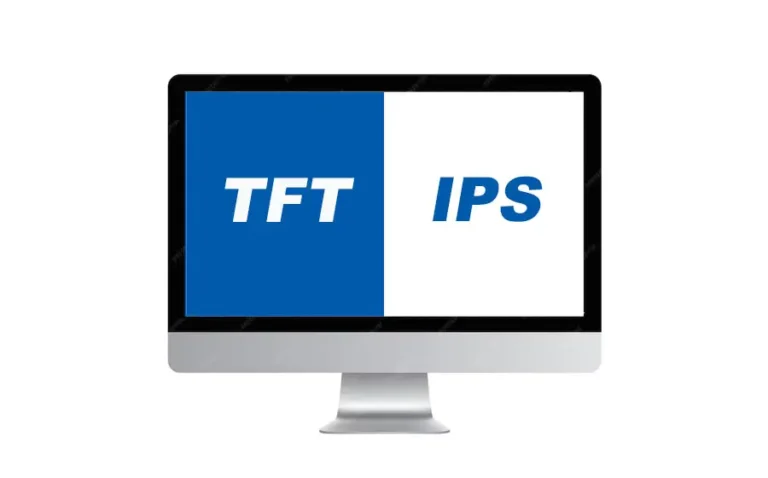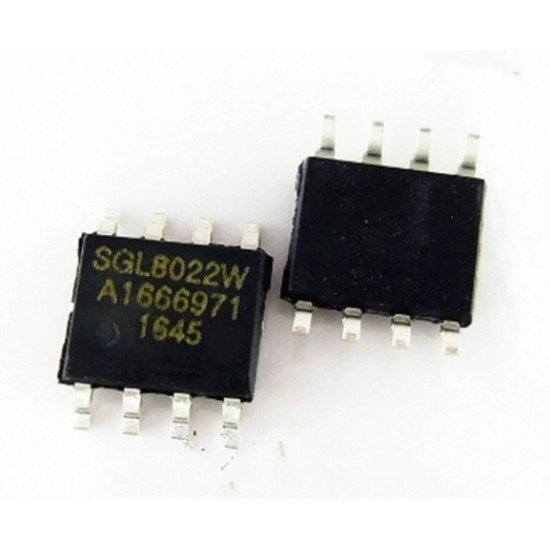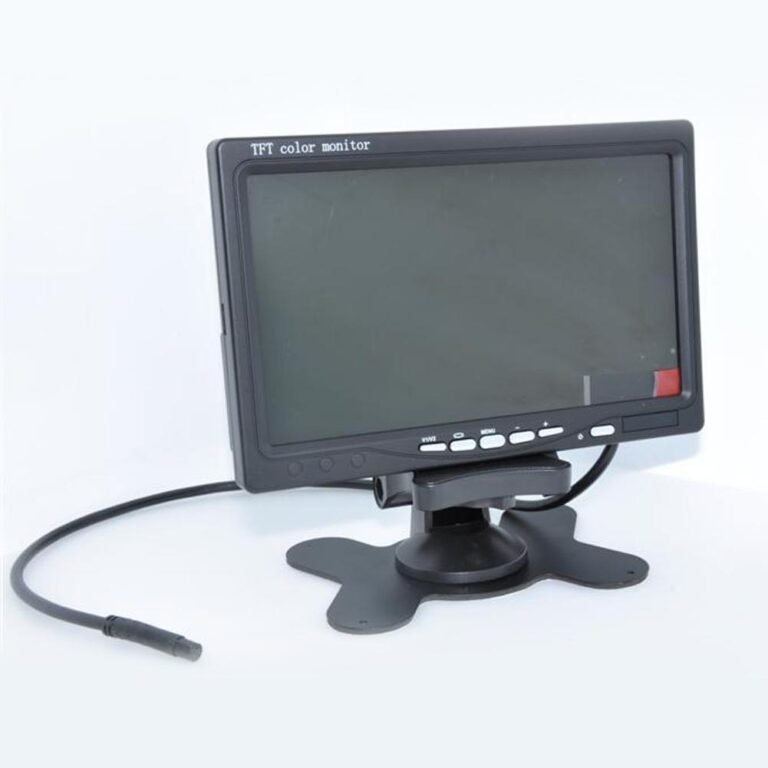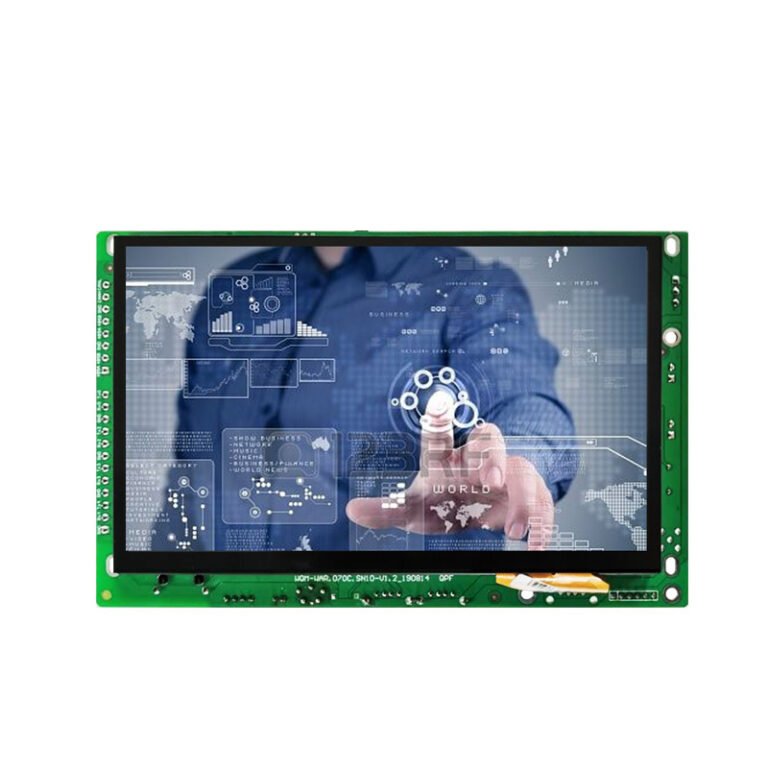The Core Concept: What Makes an LCD Screen?
LCD stands for Liquid Crystal Display, a flat-panel display technology that uses a unique state of matter—liquid crystals—to modulate light. Unlike emissive displays such as OLED or CRTs, LCDs do not produce their own light. Instead, they manipulate 백라이트 through controlled polarization and filtering to render visible images.
At a high level, every LCD panel consists of:
- A backlight source
- A 액정 레이어 sandwiched between electrodes
- Two polarizing filters
- A glass substrate embedded with thin-film transistors (TFTs)
- Color filters (for RGB rendering)
These elements work together to control how much light reaches each pixel—and what color it should be.
👉 관련 읽기: TFT 액정 디스플레이의 구조와 구동 원리
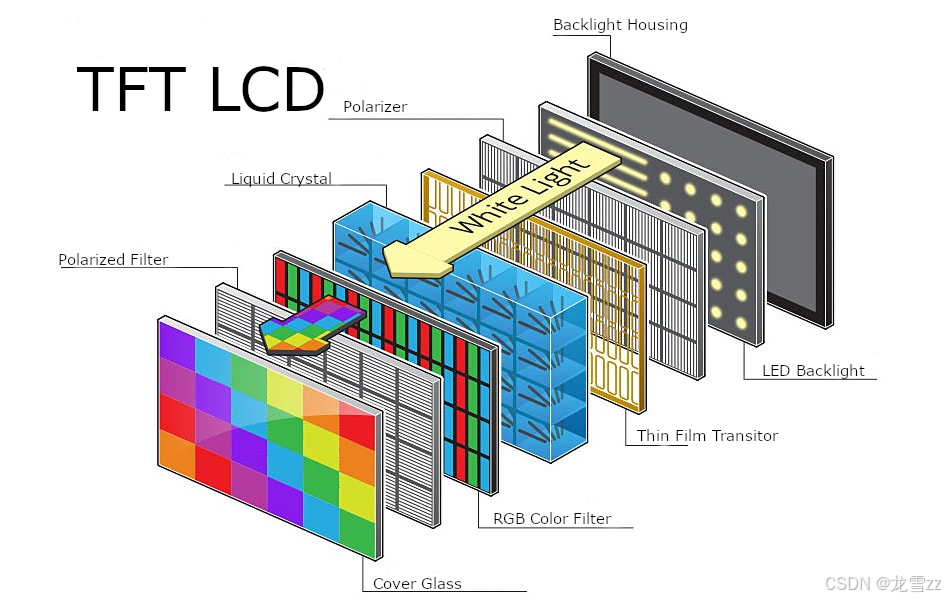
What Are Liquid Crystals?
Liquid crystals are materials that exhibit properties between those of conventional liquids and solid crystals. In LCD technology, nematic liquid crystals are the most common type used.
Their key characteristic is that they can reorient their molecular alignment when exposed to an electric field. This change affects how light passes through the layer, allowing LCDs to control brightness and contrast at the pixel level.
Without an electric field, the molecules are aligned in a twisted structure, rotating the polarized light and allowing it to pass through the final polarizer. When voltage is applied, the structure straightens and blocks light, creating darker pixels.
The Role of Backlighting in LCD Screens
Since liquid crystals cannot emit light on their own, backlighting is essential. The backlight unit (BLU) is typically located behind the LCD cell and is composed of:
- LED (most commonly white LEDs)
- Light guide plates (LGP)
- Diffusers and prism sheets
The goal is to create a uniform, bright light field across the entire display. This light will then be selectively blocked or transmitted by the liquid crystals above, depending on the desired image content.
Modern LCDs use edge-lit 또는 direct-lit LED arrangements, and some high-end panels employ local dimming to enhance contrast.
카탈로그에는 수천 개의 제품이 있습니다.
LCD-TFT, OLED 그래픽 및 영숫자 디스플레이, LCM, 전자 종이 디스플레이, 바코드 스캐너(내장형, 핸드헬드, 고정 마운트), 산업용 모니터, 산업용 컴퓨터(캐리어 보드, COM 및 SOM, 임베디드 시스템, HMI 패널 컴퓨터, SBC), 정전 용량 및 저항막 터치 스크린, 액세서리(개발 키트, 커넥터, 컨트롤러, FPC/FFC 테이프, ZIF 커넥터) 등 다양한 제품을 만나보세요.
How Pixels Are Formed in LCD Displays
Each LCD screen is made up of millions of tiny units called 픽셀. A pixel in an LCD is not a single element—it consists of three subpixels: red, green, and blue. These subpixels are individually controlled to mix and create full-color output.
At the heart of pixel control is the Thin-Film Transistor (TFT) array, which acts like a grid of electronic switches. Each subpixel is addressed by its corresponding TFT, which regulates the voltage applied to the liquid crystals.
The more voltage applied, the more the liquid crystals align and block light—making that subpixel darker. Conversely, less voltage allows more light through. By varying this across subpixels, LCDs can display millions of color combinations.
How Color Filters Create RGB Output
Since the backlight is typically white, color filters are necessary to produce full-color images. These are patterned across the display in a fixed sequence—usually red, green, and blue stripes or delta arrangements.
Each subpixel sits beneath a 컬러 필터, and only allows light of that specific color to pass. By combining different brightness levels from the red, green, and blue subpixels, the display can render any color perceived by the human eye.
으로 제작됩니다. 예를 들어:
- Red subpixel = full voltage → blocks light → appears dark
- Green subpixel = low voltage → passes more light → appears bright
- Blue subpixel = mid voltage → moderate light → mid-tone
Together, the eye blends these into a single color pixel—perhaps yellow, purple, or white.
The Role of Polarizing Filters
Polarization is essential to LCD operation. Two polarizing layers—one at the front, one at the rear—are aligned perpendicular to one another.
In the off state, the liquid crystal layer twists the light’s polarization so it passes through both filters. When 전압이 적용됩니다., the crystals untwist, blocking the polarized light at the second filter. This mechanism allows the display to selectively dim or brighten subpixels based on electric input.
In "Normally Black(노멀리 블랙)" 패널(IPS 디스플레이에 일반적)은 전압이 밝기를 활성화합니다. "Normally White(노멀리 화이트)" 패널은 전압이 빛을 차단합니다. 이 선택은 대비 및 전력 동작에 대한 애플리케이션 요구 사항에 따라 달라집니다.
다양한 유형의 LCD 기술
각각 특정 요구 사항에 맞게 최적화된 여러 LCD 패널 유형이 존재합니다:
TN(트위스트 네마틱)
- 빠른 응답 속도, 낮은 비용
- 좁은 시야각
- 입문용 모니터, 저비용 애플리케이션에 이상적
IPS(인-플레인 스위칭)
- 우수한 색상 일관성 및 넓은 시야각
- 모바일 기기, 전문가용 디스플레이에 일반적
VA(수직 정렬)
- 높은 기본 명암비, 더 깊은 블랙
- TV, 제어 패널에 사용
Transflective LCD(반사투과형 LCD)
- 주변광 반사 + 백라이트 사용
- 야외 가시성 애플리케이션(예: 야외 계기판)에 이상적
각 유형은 동일한 액정 원리를 사용하지만, 서로 다른 시청 및 전력 조건에 맞게 분자 배열과 전극 형상을 변경합니다.
👉 관련 읽기: TN, VA, IPS의 차이점은 무엇인가요?
자주 묻는 질문
LCD 화면에서 편광 필터의 역할은 무엇인가요?
이들은 방향에 따라 빛의 통과를 제어합니다. LCD는 두 개의 교차 편광판과 액정 층을 사용하여 빛을 회전시키거나 차단함으로써 픽셀 수준에서 밝기 제어를 가능하게 합니다.
LCD 화면에서 백라이트가 필요한 이유는 무엇인가요?
액정은 빛을 발산하지 않습니다. 백라이트는 선택적으로 조절되어 이미지를 형성하는 균일한 광원을 제공합니다. 백라이트가 없다면 화면은 어둡게 유지될 것입니다.
LCD 화면은 어떻게 다양한 색상을 생성하나요?
각각 자체 컬러 필터와 밝기 제어를 갖춘 적색, 녹색, 청색 서브픽셀을 결합하여 LCD는 다양한 강도로 빛을 혼합하여 풀컬러 이미지를 형성할 수 있습니다.
다른 디스플레이 대비 LCD 기술의 장점은 무엇인가요?
LCD는 에너지 효율이 높고, 비용 효율적이며, 기술이 성숙했습니다. 특히 LED 백라이트와 결합 시 우수한 밝기, 선명도 및 긴 수명을 제공합니다.
LCD 화면의 다양한 유형은 무엇인가요?
TN, IPS, VA 및 Transflective가 일반적인 유형으로, 예산형 모니터부터 야외 가시성 디스플레이, 고급 색정확도 스크린에 이르기까지 다양한 사용 사례에 각각 적합합니다.


